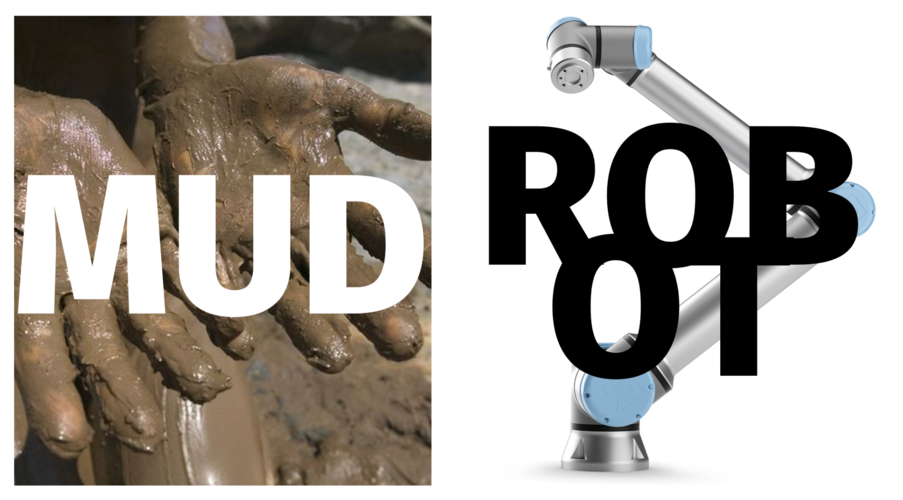STUDIO MA/BA MUD ROBOT
Prof. Giovanni Betti, LB Anna Bajanova, WM Christian Schmidts, T Angely Angulo Meza
Weekly meetings at the studio (room 314)
Wednesdays 2 pm - 6 pm
First date: April 17th 2024 at 2 pm
Studio Description
In this design studio we will explore, hands-on, the possibilities afforded by technology and natural materials to create temporary habitats for humans and non-humans inhabitants.
Goal is to imagine a series of structures, located in the basin of the Floating University in Berlin, that will allow for the expansion of their activities and at the same time will promote a controlled rewilding of the site.
Materials of choice will be exclusively natural: clay and wood. The construction method will also be given: robotically controlled clay deposition, or clay 3d printing. The hypothesis tested in the studio will be that the precise material deposition enabled by clay 3d printing can enable the creation of structures that support people but also other life-forms, the local flora and fauna of birds, insects, plants and small mammals.
Site
The site of speculation will be the basin of the Floating University in Berlin. As a site that is currently being converted from an off-limits, concrete-lined infrastructure in a site of cultural production and biodiversity promoting, the floating provides the perfect testing ground for the development of temporary structures that are entirely bio-based and test the potentials of inter-species co-habitation.
Materials and methods:
The explorations during the semester will be represented via 2 main media: drawings and models.
Drawings
The drawings will be classical architectural representations: plan, elevations, sections and axonometries. All the drawings will be line drawings. Renderings are explicitly banned from the course. Ambition of the drawings should be to make explicit the geometry and construction of the proposed structures and equally explain their relation to natural context, and their inhabitants.
Models
Models will be mostly 3d printed and will be relatively large scale: 1 to 10 or 1 to 20 representations of the proposed structures.
The models are to be intended as prototypes of the proposed structure. As such, their value will be primarily as key components of the design process. Models will be made to test design ideas and incrementally refine them.
Code
The third medium used will be code. This will not be used to communicate design intent to other people but to the robotic arm and send the printing instructions. We will use the software Rhinoceros 3D and its parametric extension, Grasshopper. No previous knowledge of Grasshopper is prerequisite although it is welcome.
Collaboration
The course will run in parallel with the design studio offered by Markus Bader and Sivia Gioberti: “Becoming Boggy”. Both studios share a common interest in the site of the floating and in the design for the non-human. We will share several common activities during the semester: site visits and actions, dinners and reviews.
Special Requirements
We will be printing using clay in room 314 in Hardenbergstraße 33. Clay can be messy at times. Our studio cannot. Precise instructions on how to behave and handle clay will be given during the studio. A prerequisite to participating in the course is the willingness to maintain a clean environment inside and around the studio, avoiding disruption to the UdK community.
